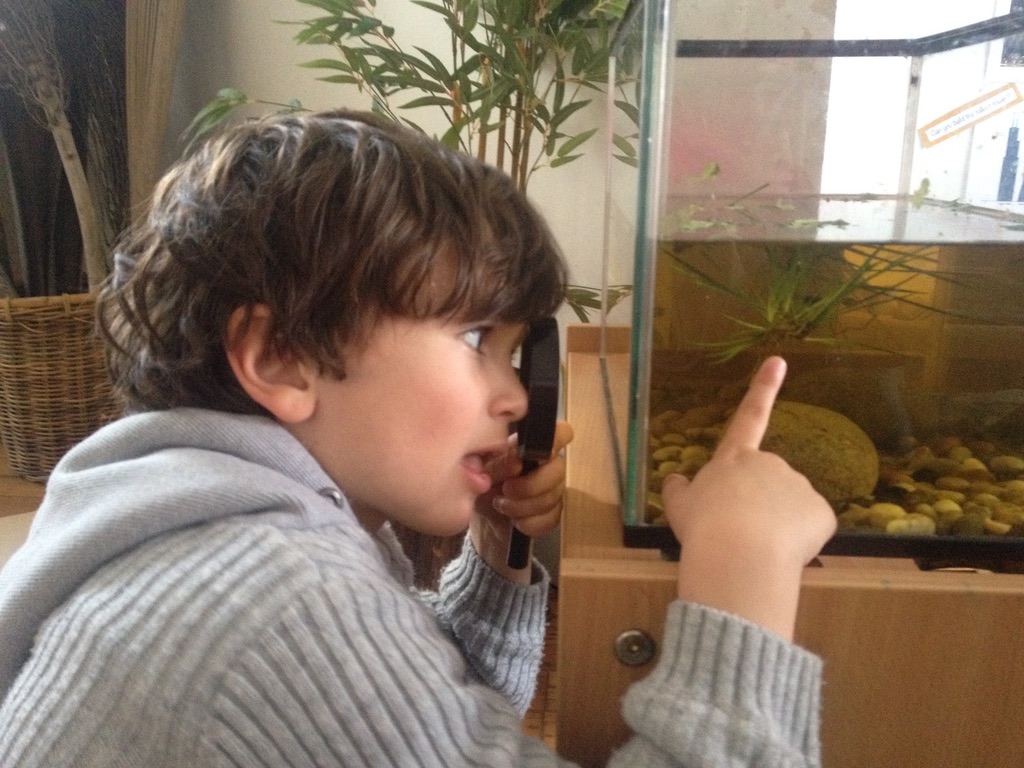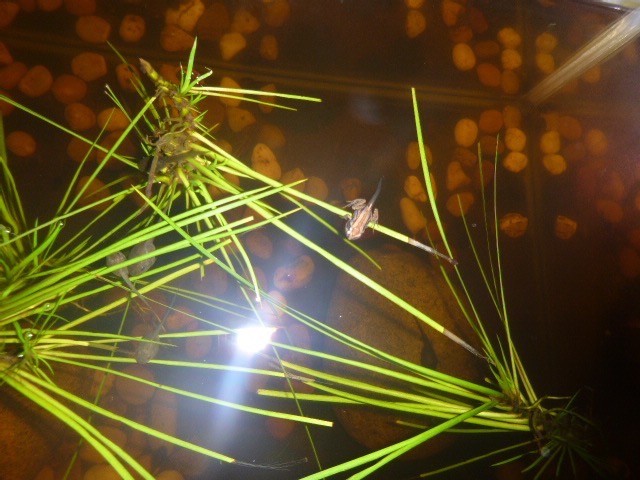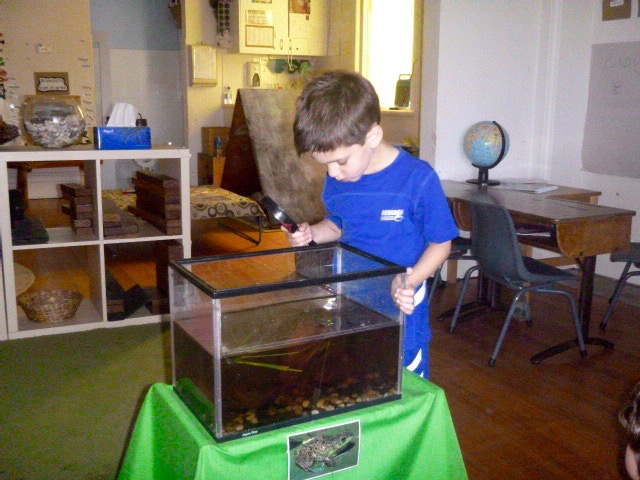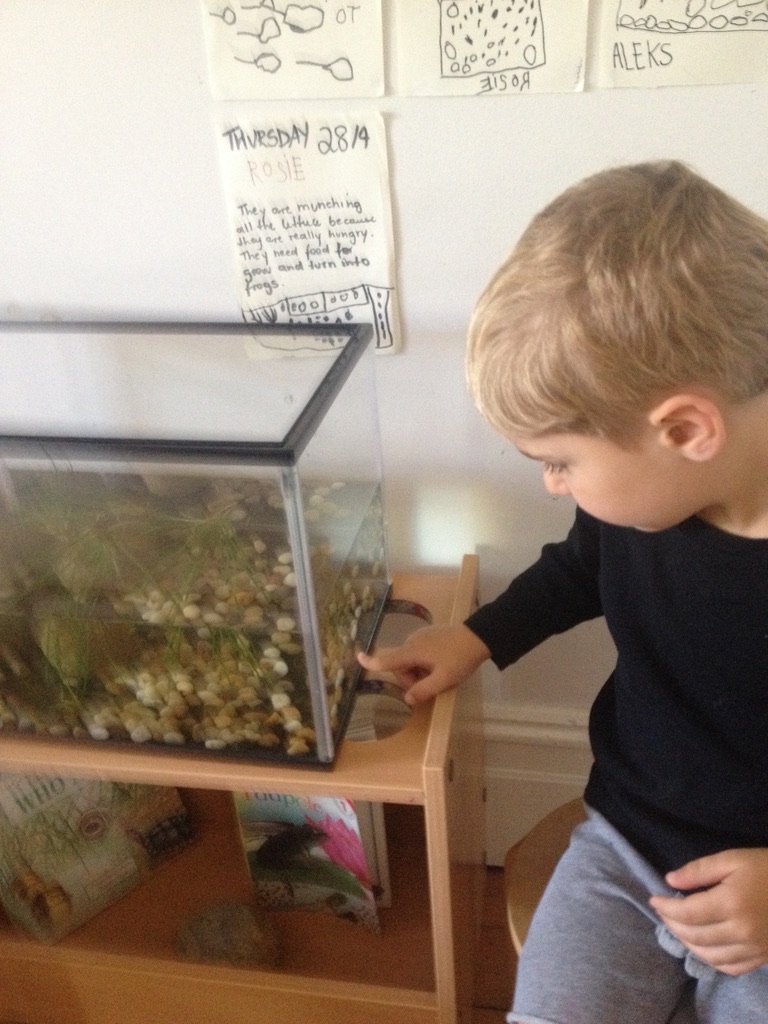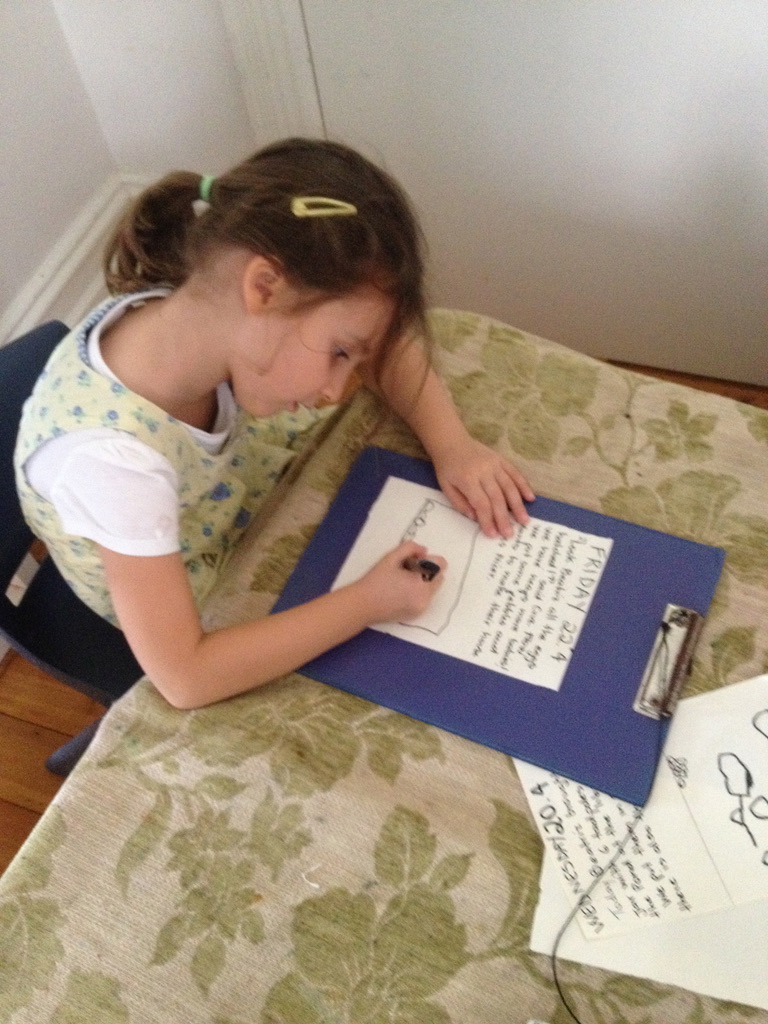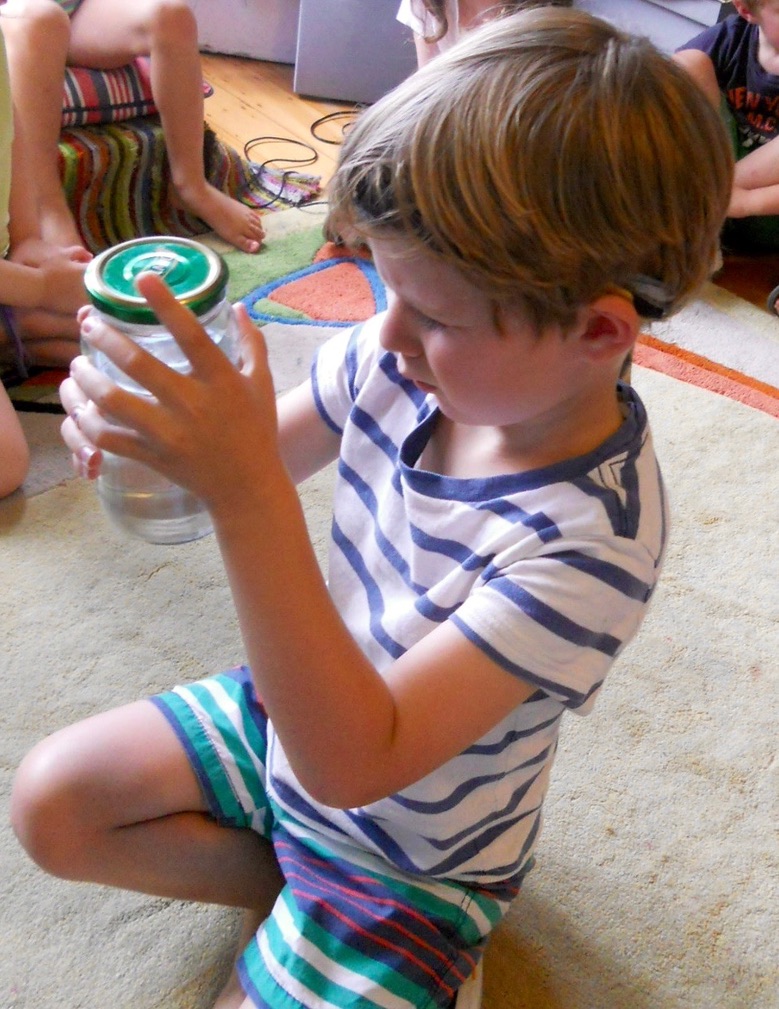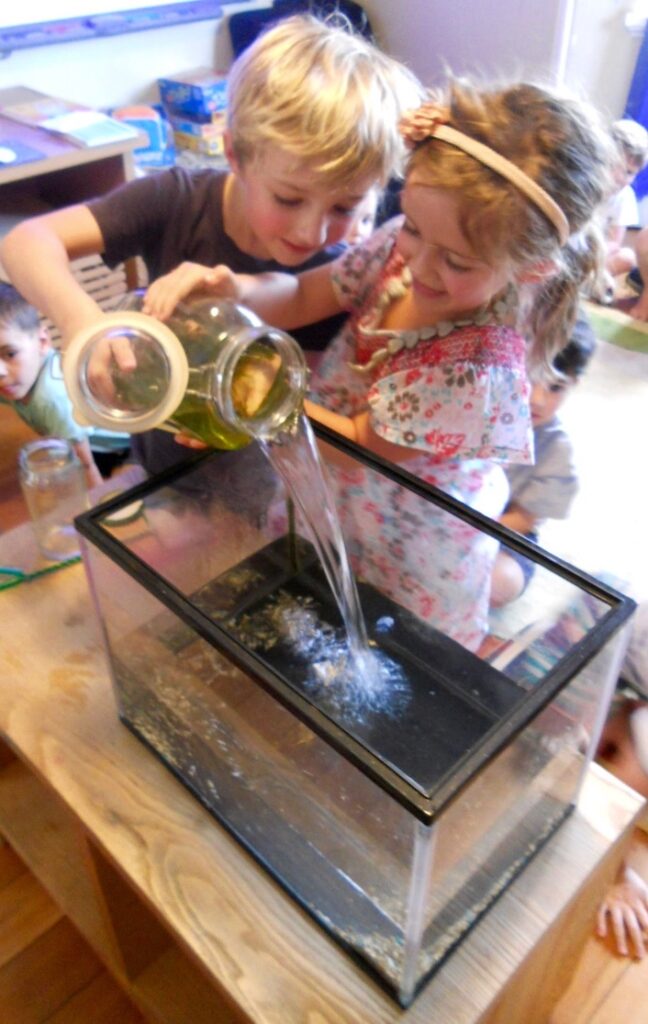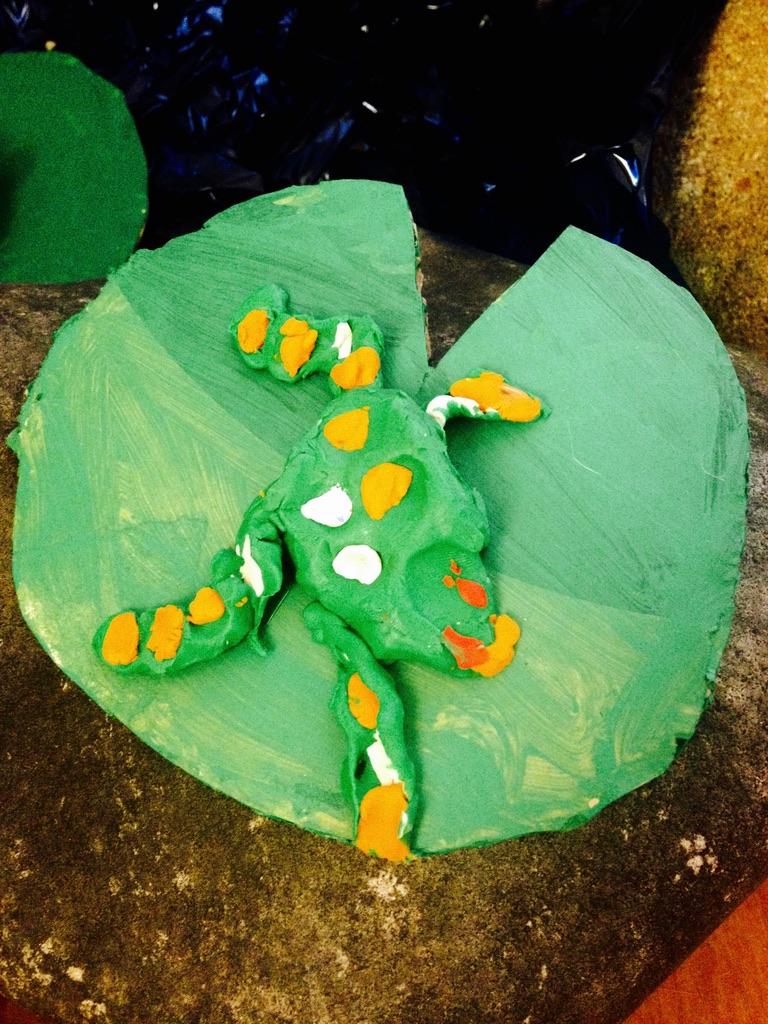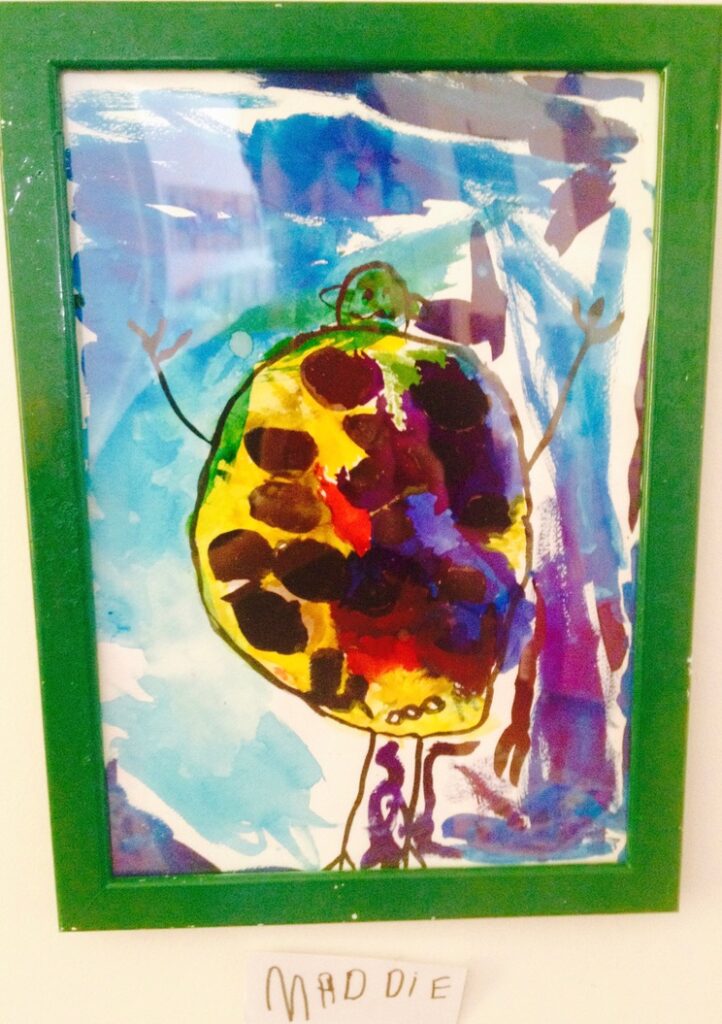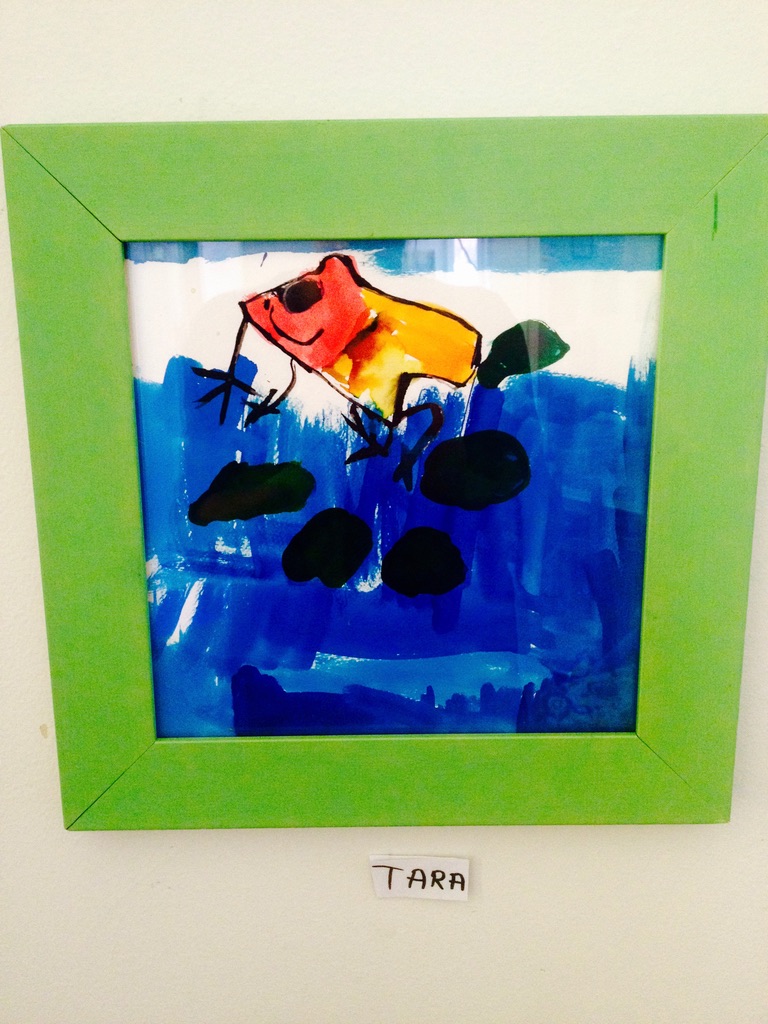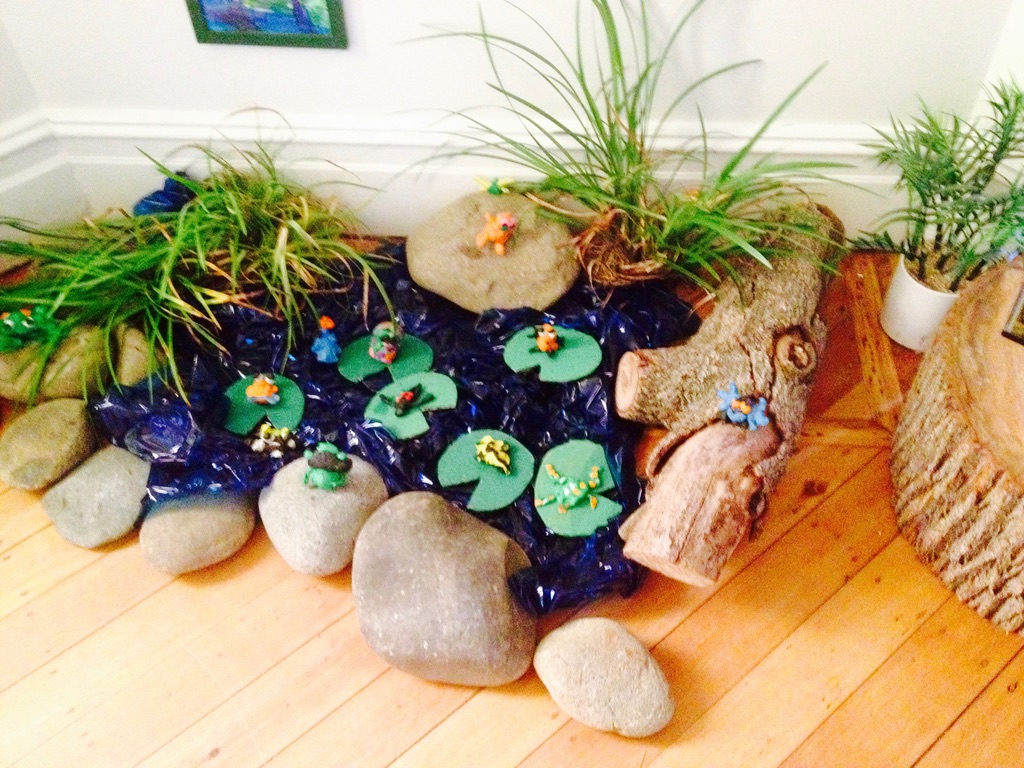Tadpole inquiry
One day a little girl from our class arrived with an interesting surprise: a jar full of tadpoles and frog spawn! As you can imagine, it caused a great stir amongst the curious preschoolers.
After taking a good look at it, the children reached the conclusion that the jar contained tadpoles and we should keep it to watch them turn into frogs.
Using an old fish tank, we created a pond habitat and started to follow their transformation.
As the days passed, the children’s interest, curiosity and wonder kept growing; as the tadpoles instigated lots of discussions and interesting talks.
To keep better track of all the interesting ideas, we started a Tadpole Diary to register everything we were observing and learning during our tadpole investigations.
Observing them became a favourite thing. From these observations, lots of wonder and questions came up:
“How does the tadpole know when to hatch the eggs?” Bailey
“ Frogs don’t have a tail, where does it goes?” Reggie
“ How long will it take for the tadpoles to turn into frogs?” Ryan
“ How will the frog get its spots?” Dylan
“Why do the tadpoles not don’t have any feet?” Maddie
TADPOLES
Reggie- “Water goes green when the tadpole is turning into a frog.”
Liora- “No the water has to be clear.”
Hugo- “No, when they swim the water is green.”
Reggie- “Legs grow first then arms and then eyes, and then the tail.”
Rosie- “Then they turn green.”
Julian- “The tail is shrinking.”
Stella- “…And then they become frogs.”
By closely observing the tadpole’s metamorphic process, the children gathered information, made inferences, predictions and registered all of the discoveries in our Tadpole Diary. Having this tool made the process of registering and sharing our learning easier and facilitated keeping track of all the thinking that emerged along the way.
As good investigators and responsible carers, the children were very attentive and responsive to the changes that our little pets gave to us. Over 4 months, we closely accompanied our tadpole’s growth and witnessed one of the most amazing life cycles of nature! The excitement of seeing the full metamorphosis process in front of our eyes was incredible!
Once most of the tadpoles had turned into frogs, we organised an excursion to return them back to the same place their were found in nature.
‘
Frog wonder
Since the arrival of our tadpoles, the question ‘What will our frogs look like?’ has piqued the children’s curiosity, leading to lively discussions, research, and spontaneous artistic representations.
Such interests were extended and further explored in our Art Studio. Watercolour and plasticine were children’s chosen materials. Great choice because it allowed them to explore their frog representation in two or three dimensions.
Pictures of a variety of real frogs were available for our artists to use as a source of inspiration and reference for their artworks.
The children were particularly drawn to the brightly coloured and patterned poisonous frogs due to their alluring appearance and dangerous traits.
Using references from the pictures and elements of their fertile imagination, the children created a wonderful Knot of frogs full of colour and fancy.
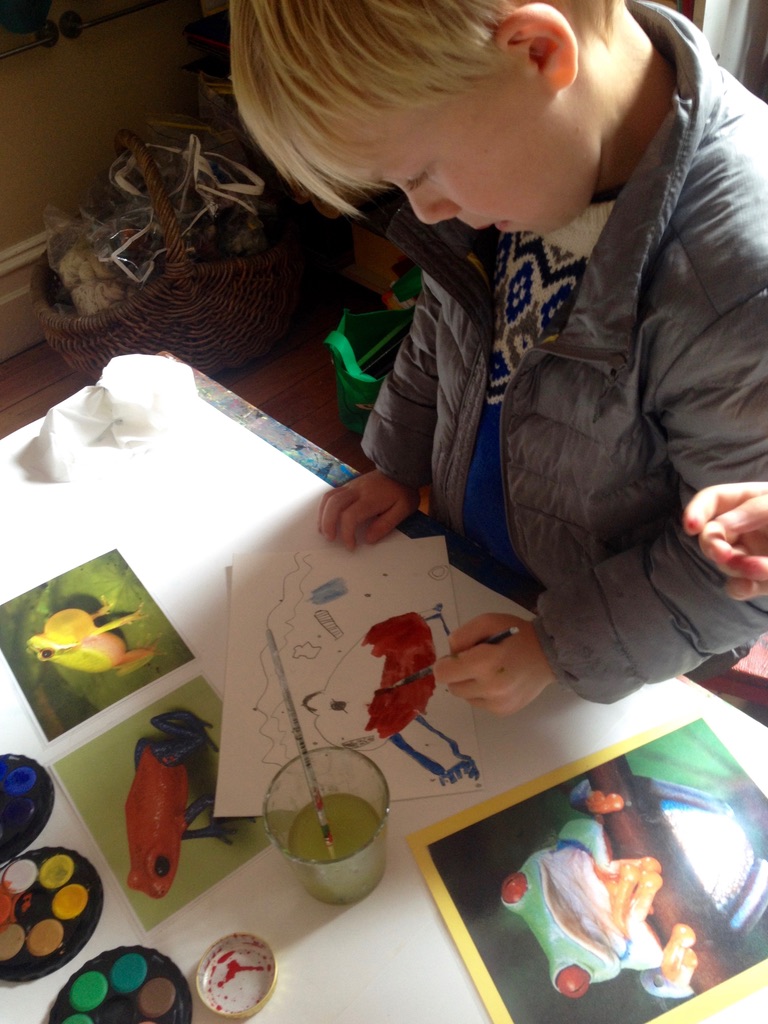
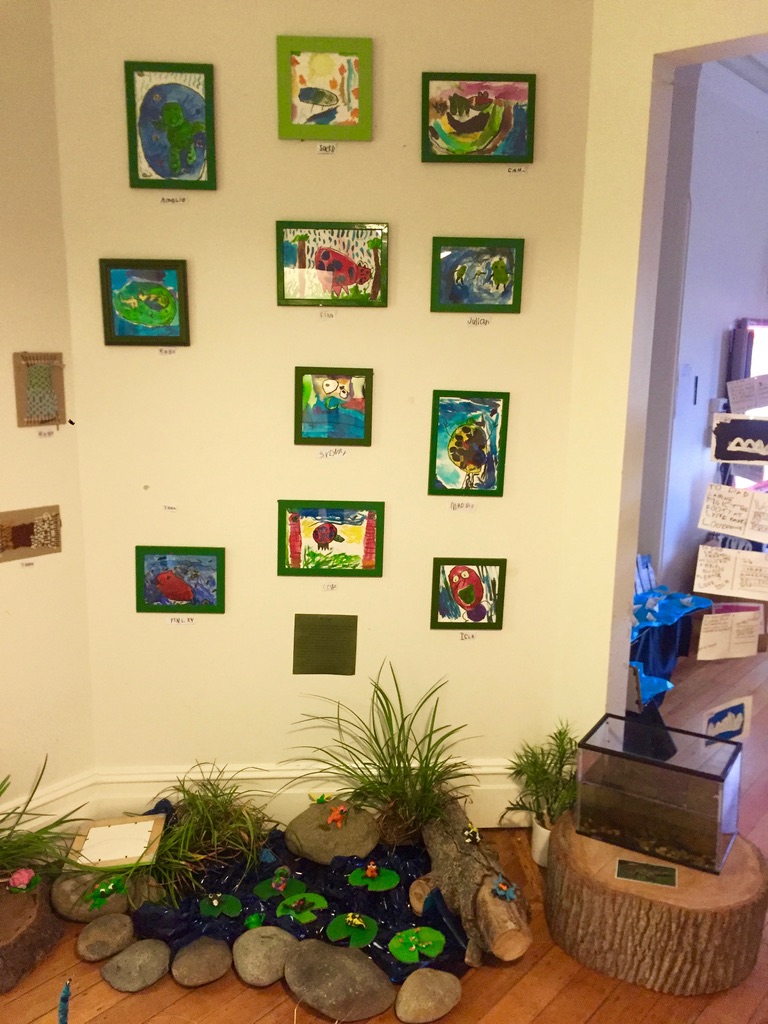
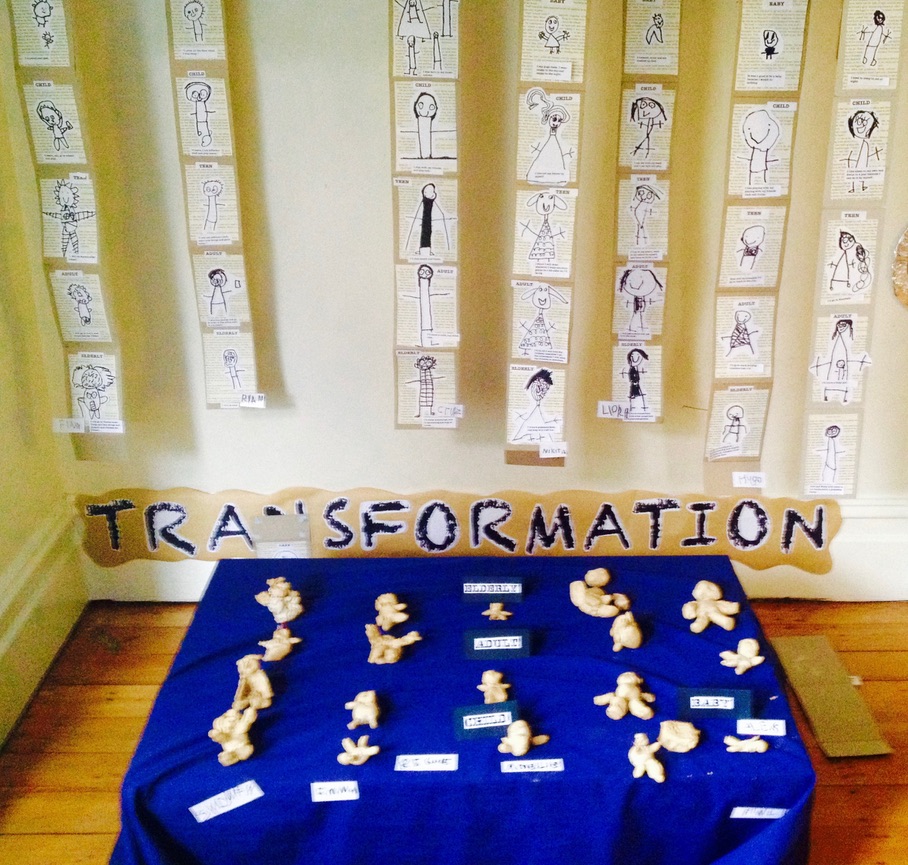
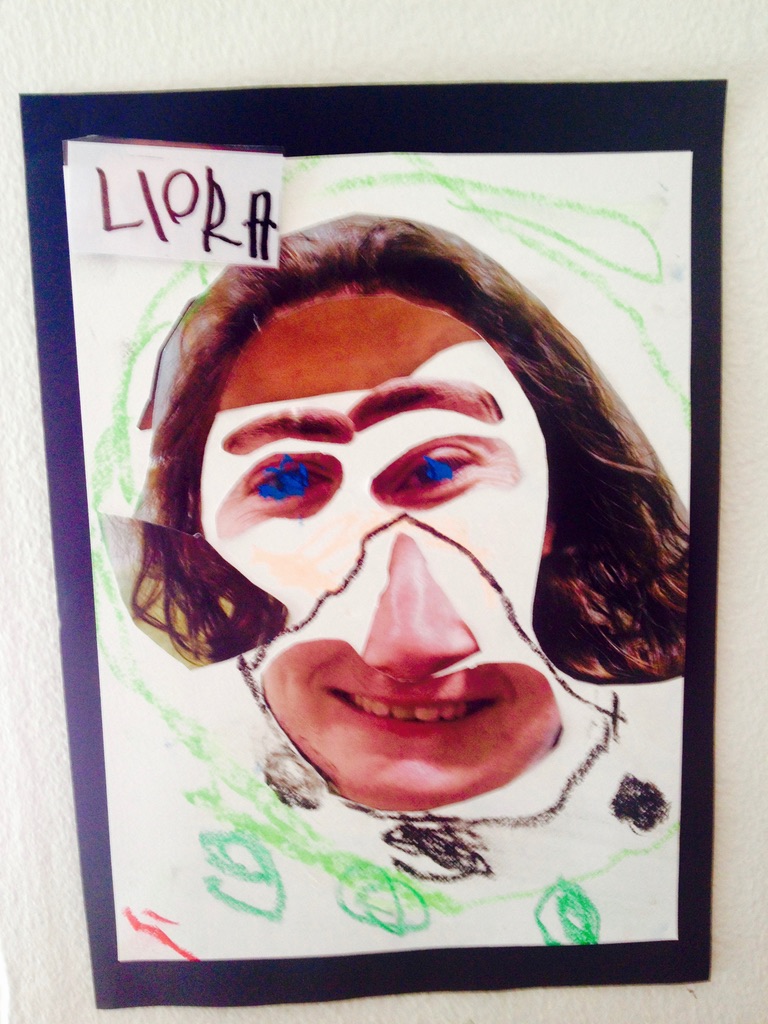
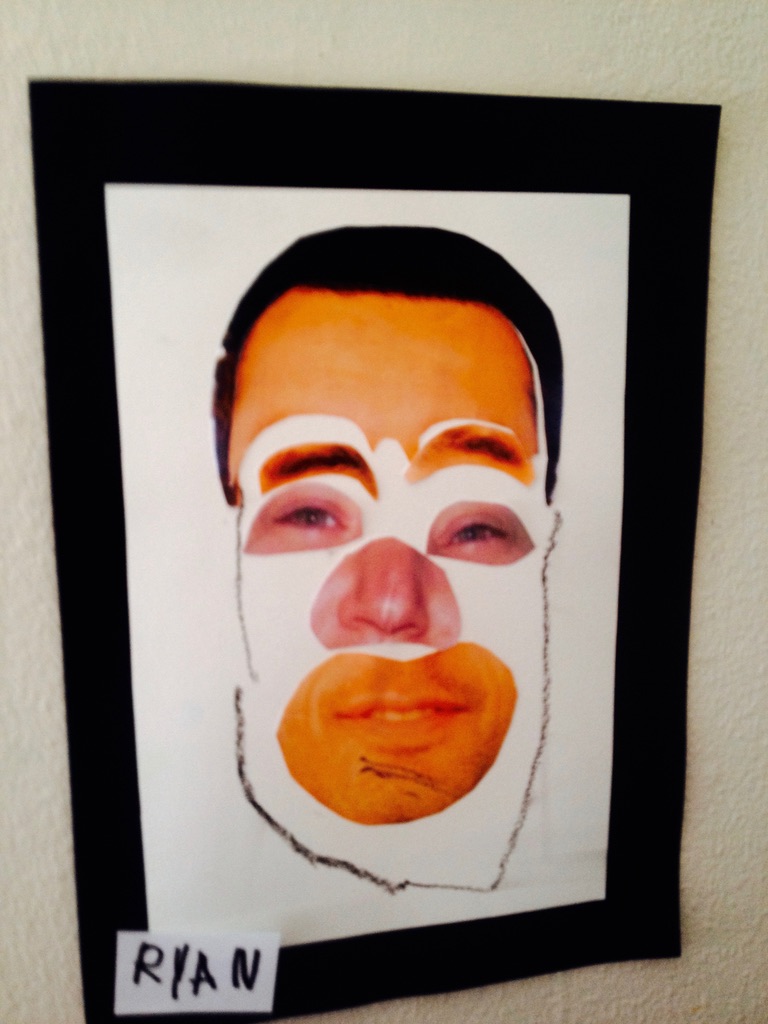
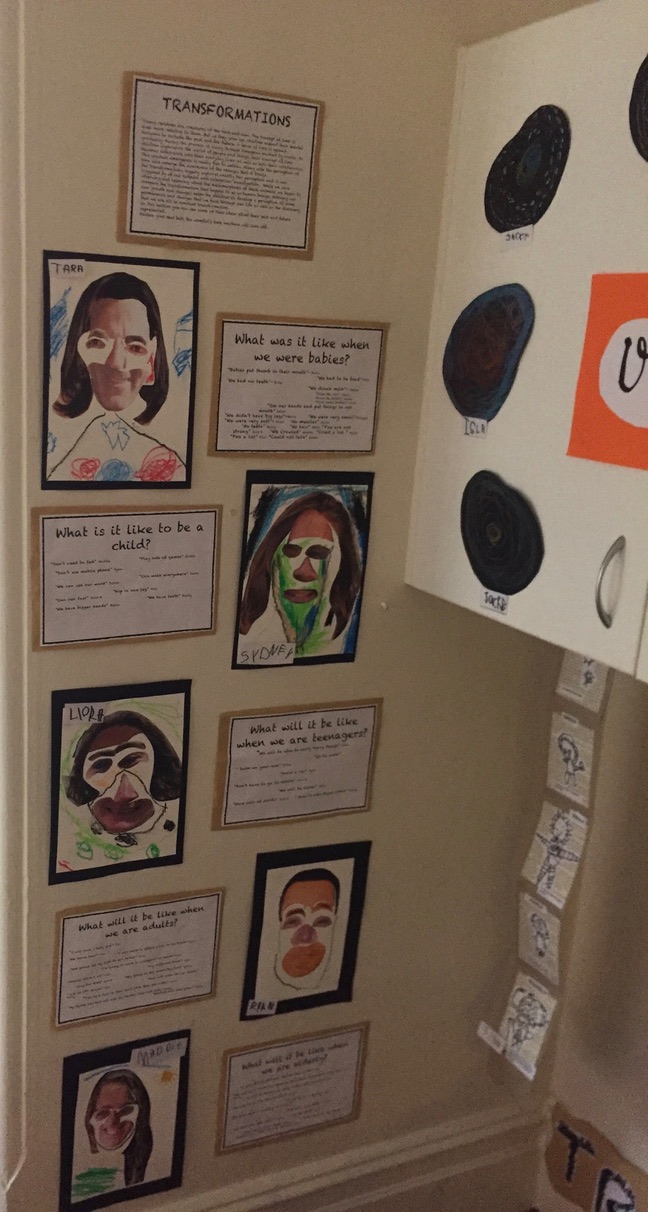
Metamorphoses and the changes that we noticed in ourselves
Young children are creatures of here and now. They live in the present moment, and their perception of time is relative. As they grow up, they begin to understand concepts such as past and future through experiencing different events and time spans. Gradually, their concept of time integrates into their daily lives and vocabulary.
It is fascinating to watch the gradual emergence of their perception of time and the awareness of the changes it brings. During our frog investigation we could discuss and compare the frog metamorphosis to the transformations that occur in humans too. This inquiry expanded beyond the initial tadpole observation, and the children began to recognise their own growth and changes through out the months. We could talk about impermanence and change as something we all experience throughout our lifetime. Moreover, we could began to appreciate the idea that we are all in constant transformation.”
